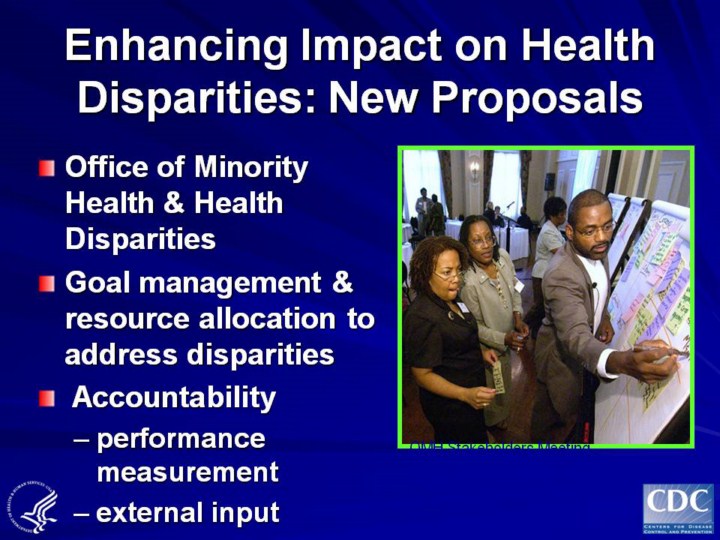| front |1 |2 |3 |4 |5 |6 |7 |8 |9 |10 |11 |12 |13 |14 |15 |16 |17 |18 |19 |20 |21 |22 |23 |24 |25 |26 |27 |28 |29 |30 |31 |32 |33 |34 |35 |36 |37 |38 |39 |40 |41 |42 |43 |44 |45 |46 |47 |48 |49 |50 |51 |52 |53 |54 |55 |56 |57 |58 |review |
 |
Enhancing Impact on Health Disparities: New Proposals
•Office of Minority
Health & Health Disparities
•Goal management &
resource allocation to address disparities
•Accountability
•performance measurement
•external input
•Despite some significant
successes, we want to make health disparities a much bigger focus for
our entire agency
•
•The “New CDC” Futures
Initiative provides an opportunity for CDC’s OMHD, its partners, and the
rest of CDC to do more, faster, to eliminate health disparities in the
United States.
•
•CDC’s executive
leadership teams examined ideas to strengthen OMH’s current efforts and
activities. The intent was to place the Office of Minority Health where
it can have optimal impact. CDC’s Executive leadership voted to create
a new Office of Minority Health and Health Disparities that will
continue its long standing focus on minority health while expanding the
office to include a focus on disparities in other high risk populations
defined by age, gender, geography, race and ethnicity, disability
status, SES, and high prevalence of behavioral risks.
•
• It was felt the
office would be best positioned to accelerate health impact for
vulnerable populations in the U.S. as a staff office within the Office
of Strategy and Innovation (OSI) with a unique administrative code and
budget allocation account. Through the goals management process, OMHD
is anticipated to have greater influence on resource allocation to
address disparities and accountability.
•
•
|